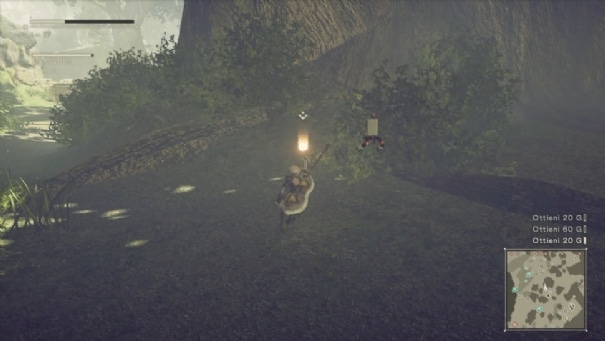The title tells the story of a man who, for unknown reasons, is awakened within Crowswood University, now abandoned and disused. The only thing we know, at least in the beginning, is that we must at least put ourselves in the premises of the facility, bu
t a presence will be ready to disturb us right away; we refer to the voice of Professor William Holtwick, who will somehow guide us to what appears to be a rather perverse game. The fact is that the Crowswood University, in particular, has a not very crystalline past: in 1947, in fact, 20 students disappeared in mysterious circumstances, and since th
en the whole structure fell into a mystery mist. We can not spoil much more of the plot, but already these elements can make you guess that ofThe Crow’s Eye is a mystery that will be revealed little at a time during the various levels proposed. We said in opening that the game vaguely reminds us of Bioshock and this is due to some of the narrative gimmicks used. Much of the intrigue, for example, is unveiled thanks to the recordings of the protagonists’ thoughts scattered around the explorab
le environments, as well as through the many legible documents (unfortunately only in English). Having the patience to deepen them will surely increase interest in history, which, in sum, does not disappoint and, indeed, instills the will to see where it will end up in the end. The title story speaks of the relationship between science and ethics, love and family, but also the consequences of their actions.A dangerous game and to the limit between madness and geniu
s, where our ignorant protagonist seems to be just a simple pawn. Logical and Scary Enigmas Looking at the description of the title on Steam, you can come across terms such as “psychological terror,” horror, and so on, and we must say that this could give a
fairly different idea of the experience actually provided by the game. Instead of a scary and scary scene of some scarejump, in fact, we found a first-person puzzle game in which the sense of terror and suspense is all but nil, with the advantage of the slightly demanding puzzles and a narrative not wicked.
We go with order: the player’s main activity will be to investigate university environments; from time to time, our passage will be blocked by locked doors, and then we will have to make an effort to find a key or, in more complicated cases, an alternative passage. We define “more complicated cases” episodes in which various types of logic enigmas are proposed.
Overall, the puzzles will recall three, four defined dynamics, but will vary in relation to the difficulty and amplitude of the environments. And here we come to Portal (and, if desired, also to Half Life 2): in the course of the game, one of the most recurring types of puzzles will see the use of some manipulable cubes by means of a kind of electromagnet capable of attractin
g and rejecting not only these elements but also the same character. In general, therefore, the game tries to propose a certain variety, but the negative sides are not lacking. The feeling, in a sense, is that the title wants to do too much with the means at its disposal. For example, during our tests, we have repeatedly complained about the physical system and collision management
between polygons. In a game where it is necessary to move precisely cubes and objects, in fact, the fact that the movements of one’s character can cause obvious movements of compositions created tiringly. Several times we were forced to repeat an enigma because, for some reason, the cubes we had positioned had changed their position of initiative. Curiously, in this rega
rd, we have tried to launch the same cubes into the air in several episodes, and we have come to realize that on many occasions these have gone banging against invisible walls. This is not a defect that prevents everything from completing the game in just under 10 hours, but of course it does mean that the overall performance quality is not at the highest level. and we have c
ome to realize that on many occasions these have gone to slam against invisible walls. This is not a defect that prevents everything from completing the game in just under 10 hours, but of course it does mean that the overall performance quality is not at the highest level. and we have come to realize that on many occasions these have gone to slam against invisible walls.
This is not a defect that prevents everything from completing the game in just under 10 hours, but of course it does mean that the overall performance quality is not at the highest level.


